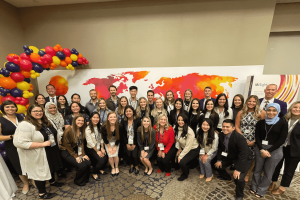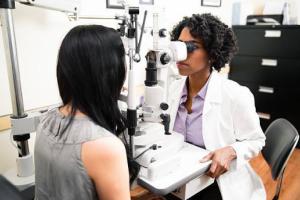March 13, 2023
My first experience at Global Specialty Lens Symposium (GSLS) in Las Vegas greatly expanded my knowledge on specialty lenses, and I am grateful for the opportunity to attend. Below are my top takeaways in myopia management from GSLS 2023.
- Technology like Visavy by CooperVision allows greater accessibility to orthokeratology lenses by allowing practitioners to feel more confident with initial fittings. By calculating CRT lens parameters from Ks, Rx and HVID or by uploading corneal topographies to design the best initial lens, Visavy can help eye care practitioners across the US keep up with the growing demand for myopia management.
- Dr. Maria Liu discussed some common misconceptions in myopia control. Firstly, she pointed out that axial length is not necessarily correlated to refractive data and that it can actually accelerate in growth, years before myopia onset. Therefore, it is important to take both metrics into consideration, particularly when factoring in how a child’s age affects myopia or axial progression. Overall, non-contact axial length is still a more objective datapoint than subjective refraction.
- Dr. Liu also emphasized that outdoor breaks need to truly be outdoors, without any surrounding objects nearby. There cannot be any peripheral obstructions like couches in a living room, as the retina needs both central and peripheral defocus. Short, frequent breaks are better than a longer single break. These are all takeaways I have actively advised my patients of since attending GSLS.
- Through a variety of different talks and posters, I learned that for orthokeratology lenses, a smaller OZD is generally better for myopia control, whereas a larger OZD is better for adult patients, as it creates less glare within the visual axis. Dr. Chi Nguyen, the Cornea Contact Lens resident from Pacific University, presented a poster on fitting an adult patient into an orthokeratology lens with a larger OZD. Subjectively, this patient was much happier with their vision throughout the daytime, with a reduction in glare and halos. Another important point is that the OZD on a lens does not necessarily translate to the cornea; the topography measurement must also be referenced to see the true resultant shape of the corneal surface.
- I learned that punctate corneal staining from orthokeratology can increase the permeability of atropine. Although there is not yet a clear consensus on whether or not combination treatment is more effective than monotherapy, and if the combination effect is short lived to 6 months or longer, these factors must be taken into consideration when evaluating a patient undergoing two treatments concurrently.
- According to Dr. Liu, 5 diopters of myopia is equivalent to 12 years of aging in terms of vision deterioration and eye disease. This is a valuable metric to keep in mind when evaluating young patients with myopia, as well as older patients for ocular disease.
__________

Emmy Tian is currently a 4th year student at Berkeley Optometry. Throughout school, she has developed a passion for specialty contact lenses and teaching, and plans on pursuing a contact lens residency after graduation. In her free time, Emmy enjoys teaching herself new things like hand lettering, embroidery, and knitting blankets.








